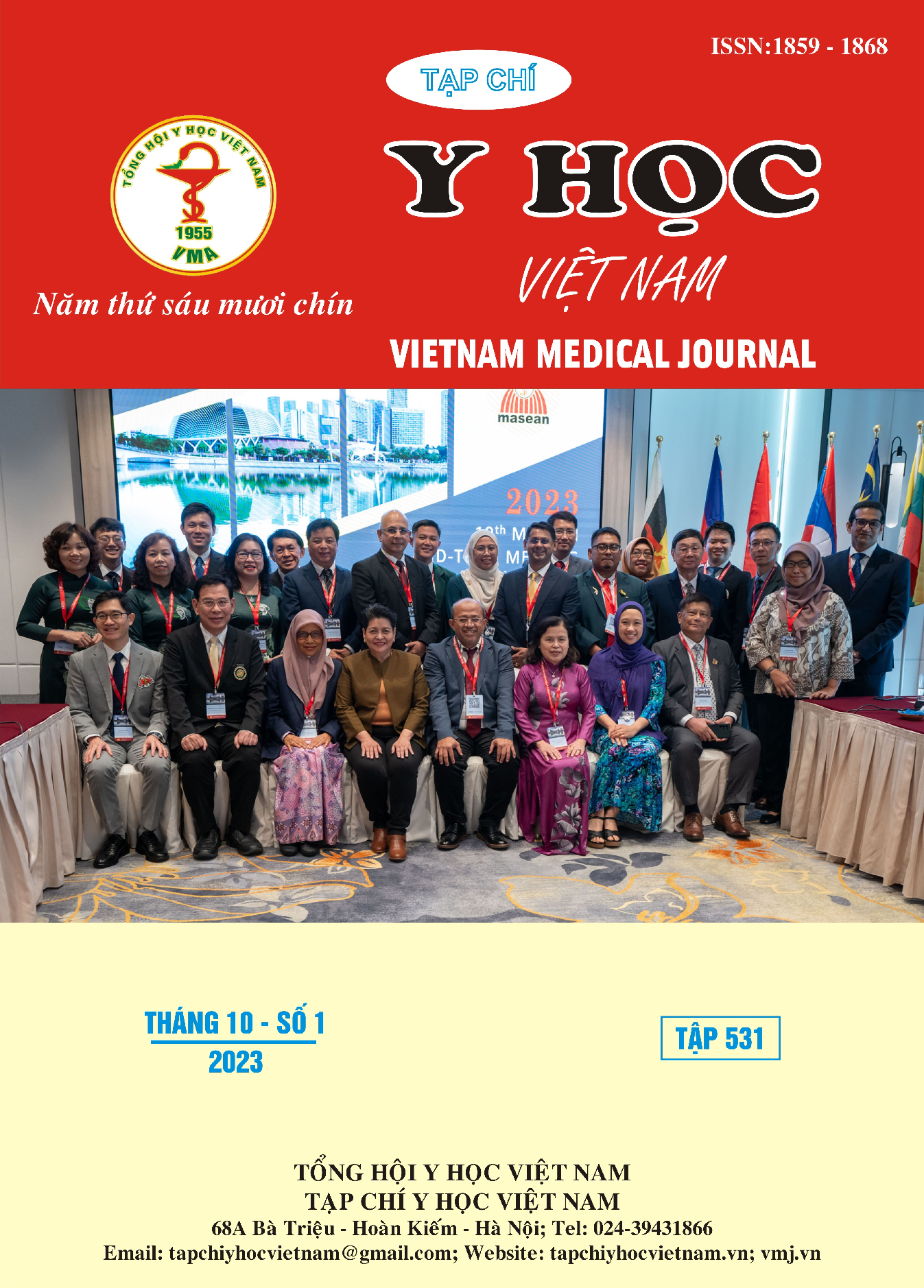RESULTS OF POLYPROPYLENE 6-0 FLANGED INTRASCLERAL FIXATION TECHNIQUE FOR INTRAOCULAR LENSES
Main Article Content
Abstract
Objective: To evaluate the efficiency of polypropylene 6-0 flanged intrascleral fixation technique for intraocular lenses. Subjects and research methods: Descriptive study without a control group on 38 patients who has surgeried by polypropylene 6-0 flanged intrascleral fixation technique for intraocular lenses at the Eye Trauma department of Vietnam National Eye Hospital from 1/2022 to 7/2023. Results: Among 38 patients, there are 24 men (63.16%) and 14 women (36.8%) The mean age of the patients in the study was 51.55 ± 22.75 years old (the youngest age was 5 years old and the oldest age was 85 years old). In which, the two age groups have the highest rate are 18-50 years old (34.2%) and ≥ 50 years old (52.6%). The majority of patients have occupations as manual labor (52.64%), the rest are knowledge (28.95%), students (13.16%) and other occupations (5.26%). The main cause is trauma (63.15%), in which concussion trauma accounted for 55.26% and transocular injury was 7.89%. The next most common cause is complications of phaco surgery, accounting for 31.58%. Congenital Ectopia lentis accounted for 5.26%. The study cases had the preoperative best-corrected visual acuity was very low, an average of 1.31 ± 0.23. After intervention according to the method of polypropylene 6-0 flanged intrascleral fixation technique for intraocular lenses, the postoperative best-corrected visual acuity was greatly improved, an average of 0.80 ± 0.40. This difference is statistically significant with 99% confidence (p<0.01). Regarding Optic of intraocular lenses, most of them have symmetric Optic with 34 eyes (accounting for 89.5%), there are 3 eyes that are slightly deviated or tilted (accounting for 7.9%), there is 1 case with a lot of deviation that had needed to re-surgery (accounting for 2,6%). Regarding the Haptic of the intraocular lens, there was only one eye, that had been slip off on one side of Haptic (accounting for 2.6%), the rest of cases study had all the better and did not drop or break (97.4%). Regarding the polypropylene 6-0 flanged of method are all good, the rate is 100%. Conclusion: The polypropylene 6-0 flanged intrascleral fixation technique for intraocular lenses gave positive results after surgery and it is an effective method. The method is highly applicable and can be used for many different types of intraocular lenses, reducing the cost of treatment for patients when in many cases it is possible to reuse the patient's old IOL to creat flanged intrascleral fixation by this method.
Article Details
References
2. Malbran ES, Malbran E, Negri I. Lens guide suture for transport and fixation in secondary IOL implantation after intracapsular extraction. Int Ophthalmol. 1986;9(2-3):151-160.doi: 10.1007/ BF00159844
3. Agrawal S, Singh V, Gupta SK, Misra N, Srivastava RM. Transscleral fixation of closed loop haptic acrylic posterior chamber intraocular lens in aphakic nonvitrectomized eyes. Indian J Ophthalmol. 2015;63(8):649-653.
4. Ganne P, Baskaran P, Krishnappa NC. Re: Yamane et al.: Flanged intrascleral intraocular lens fixation with double-needle technique (Ophthalmology. 2017;124:1136-1142). Ophthalmology. 2017;124(12):e90-e91.
5. Canabrava S, Bernardino L, Batisteli T, Lopes G, Diniz-Filho A. Double-flanged-haptic and capsular tension ring or segment for sutureless fixation in zonular instability. Int Ophthalmol. 2018;38(6):2653-2662.
6. Belkin A, Yehezkeli V, Assia E. Trans-optic suture fixation of malpositioned intraocular lenses. Int Ophthalmol. Published online April 1, 2022. doi:10.1007/s10792-022-02272-y
7. Mahmood A, Aljodaie M, Alsaati A. Four-flanged prolene fixation for a toric trifocal intraocular lens of the double C-Loop design in an eye with severe capsular phimosis. Am J Ophthalmol Case Rep. 2021;21:101000. doi:10.1016/j.ajoc.2020.101000


